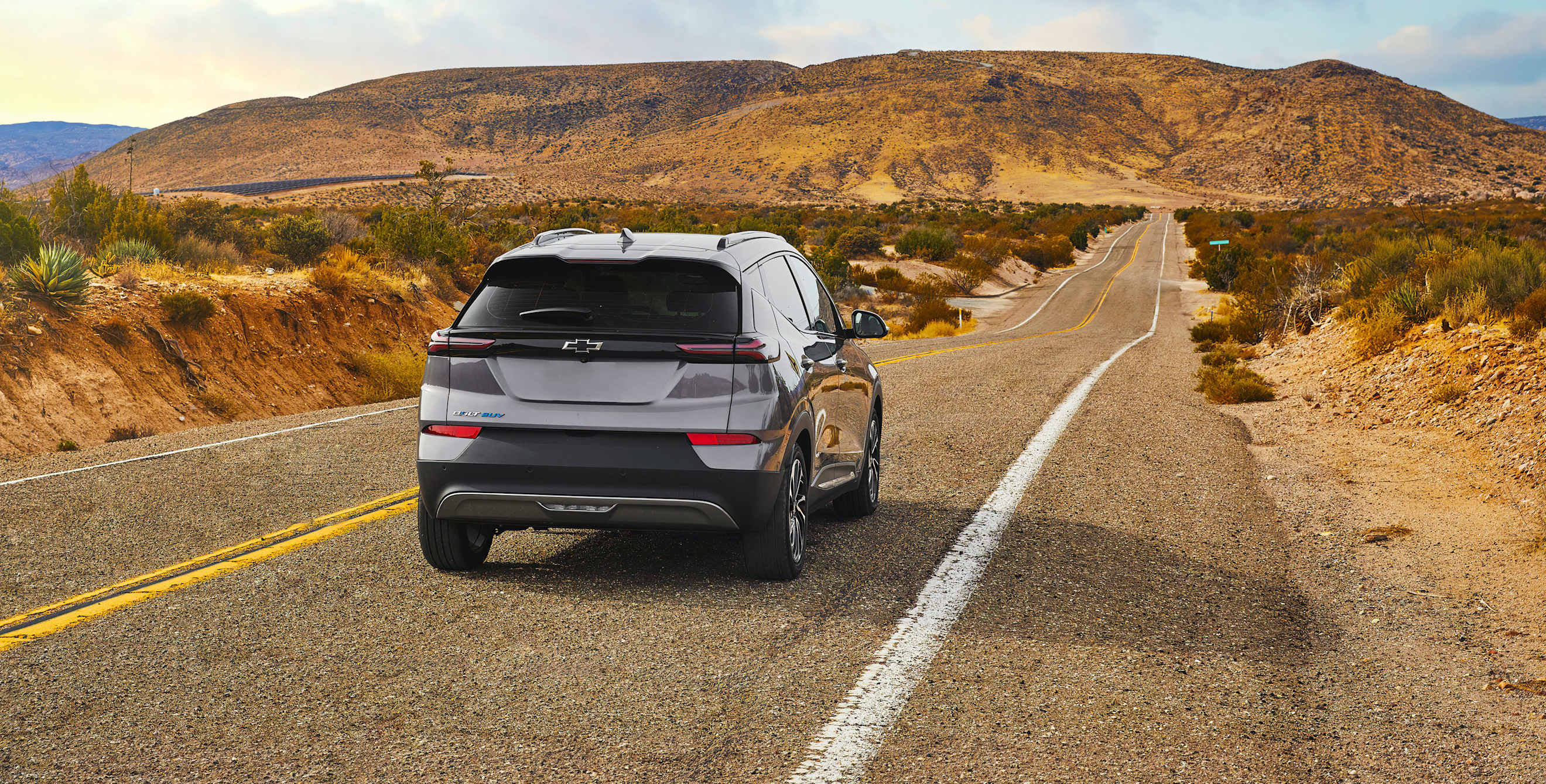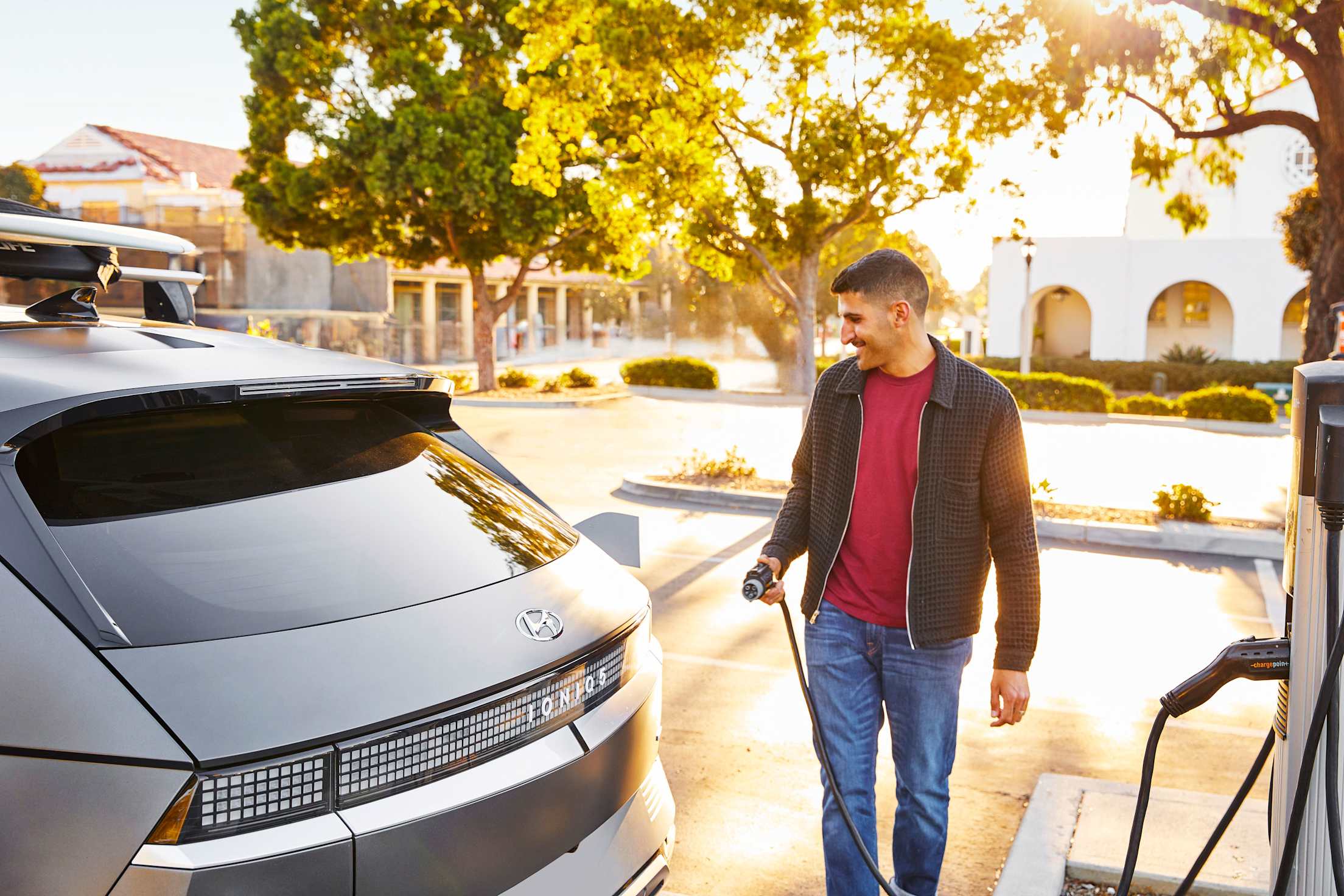
Are Worries About EVs Justified?
Car shoppers say they’re reluctant to buy an electric vehicle. But their concerns are sometimes misplaced.

Car buyers today face an embarrassment of choices when it comes to electric vehicles, with dozens of models available in a wide range of styles and an even wider range of prices. Trouble is, buyers still aren’t very interested in EVs.
When AAA recently asked potential buyers across the U.S. what kind of car they planned to buy next, only 16% said they were likely or very likely to buy an EV. That’s a new low, down from 25% in 2022.
Asked why they were reluctant to purchase an EV, buyers cited five reasons: high battery repair costs, high initial purchase prices, unsuitability for long-distance trips, a shortage of public charging stations, and fear of running out of charge on the road.
Those reasons certainly sound scary, but are they legitimate? We looked at the facts behind the fears; here’s what we found.
Buyer Concern: More Expensive to Repair
A full 62% of respondents said that high battery repair costs were a major reason they wouldn’t buy an electric vehicle. But are EVs that much more expensive to fix?
The specific anxiety around battery repair seems to be a holdover from the first generation of EVs, whose batteries sometimes failed faster than the rest of the vehicle. In those cases, replacing the battery could indeed be an expensive proposition. Today’s batteries, by contrast, are expected to last eight to ten years; manufacturers put that in writing, in the form of warranties that typically cover eight years or 100,000 miles. Repairing or replacing a battery in one of today’s vehicles isn’t as realistic a concern as it once might have been.
When it comes to more general maintenance costs, EVs are actually cheaper than internal combustion engine (ICE) or hybrid vehicles, due to their design and powertrains—in some cases, significantly so. According to AAA’s 2024 Your Driving Costs analysis, compact SUVs with internal combustion engines that drive 15,000 miles a year cost an average of $1,630 annually to maintain; electric models cost just $1,072.
There’s one type of repair for which EVs can indeed be more expensive than their internal combustion counterparts: A 2023 report by Mitchell (which provides technology solutions to insurance carriers, car makers, and repair shops) found that the average cost of repairing an EV after a collision was $950 higher than that of an ICE vehicle. However, that gap narrows dramatically if you remove Teslas from the data. Without that one brand, the average EV is just $269 more expensive to repair than an ICE vehicle.
Dylan Bade, EV analyst for AAA Mountain West Group, says that the repairability of EVs is improving every year. “In 10 to 20 years, EVs will improve to surpass gas vehicles in terms of drive power, reliability, and fuel unit efficiency,” he said. “But for now, any repairability concerns are best solved with good insurance.”
Our verdict: Mixed.

Buyer Concern: More Expensive to Purchase
High EV purchase prices turn off 59% of the car buyers surveyed by AAA. They aren’t wrong: Electric vehicles are indeed much more expensive to purchase than gas vehicles today. According to Kelley Blue Book, the car-shopping service, the average gas-powered vehicle now costs $48,907, while electric vehicles averaged $56,910—more than 16% higher. Of course, averages can deceive: The KBB dataset ranges from the $29,000 Nissan Leaf to the Mercedes-EQ EQS SUV, which retails for more than $100,000.
A big part of that price difference between EVs and ICE vehicles has nothing to do with power source: EVs are commonly configured with high-end features (perhaps to help justify those higher price tags). But even entry-level EVs are more expensive than their ICE counterparts. Compared to that electric Nissan Leaf, for example, the gas-powered Nissan Versa begins at a mere $17,190.
For years, EV enthusiasts could count on preferential tax treatment to take some of the sting out of the purchase price. But that benefit is vanishing: The $7,500 tax rebate for new EVs and the $4,000 rebate for used models are both ending Sept. 30. While EV prices will always be subject to a range of forces, Bade says shoppers can expect pricing to “look kind of crazy” for the next few years. He adds that it’s possible dealers will find themselves overstocked this fall, when the rebate ends, and may have to cut prices to move aging inventory.
Our verdict: Justified.
Buyer Concern: Unsuitable for Long-Distance Travel
While virtually no one hits the road fearing they won’t find any gas stations along the way, those considering electric vehicles aren’t quite so certain: 57% of car buyers surveyed by AAA said they worried that EVs are unsuitable for long-distance drives.
That worry hinges on two factors—EV range and the distance between charging stations, particularly in rural areas.
The first concern is no longer as valid as it might have been in the past. While the median range of an EV was a paltry 90 miles in 2015, in 2024 it hit 283 miles, with at least one model (the Lucid Air) providing over 500 miles, according to the U.S. Department of Energy.
While that average is less than the median 403 miles of range a gas-powered car can provide (as of 2021, the most recent year of the data), it’s still enough to get you from, say, San Francisco to Bakersfield. Along that route, you’ll encounter literally hundreds of charging stations; the longest gap is currently just 42 miles.
But that calculus changes when you veer from the beaten path. One stretch of Highway 87 in Montana, for example, has 351 lonely miles without charging stations. That’s too far for most EVs and isn’t likely to change soon. You can almost always find workarounds for such gaps, but long-distance drives in EVs in some parts of the country can still require careful route planning, caution, and patience.
Our verdict: Mixed.

Buyer Concern: Not Enough Charging Stations
This concern—closely related to the one above—was cited by 56% of survey respondents.
In one sense, it doesn’t seem realistic: According to one study, there are more than 73,000 charging stations nationwide, with 229,000 individual charging ports.
However, that number seems to be dropping, falling by 4% from May to June 2025. The reason seems to be almost entirely political: The federal government recently suspended a $5 billion federal program funding the construction of EV charging stations. Furthermore, many of those stations seem to be poorly maintained: Harvard Business School research found that 22% of them were unreliable.
But the real problem seems to be that those charging stations aren’t distributed evenly, and drivers worry about finding one on an intended route.
So, for example, if you live in a charger-rich location such as Los Angeles, which has 1,874 stations, you’re probably no more than a mile from one at any given time. And even then, you may never even need it. “Most urban and suburban EV owners never use a public charging station at all,” Bade says. “If you’re driving less than 100 miles a day, you get all your charging done at home.”
On the other hand, if you’re driving through North Dakota—there are only 95 charging stations in the entire state—you would be right to be concerned.
Our verdict: Mixed.
Buyer Concern: Running Out of Charge
The final concern is a perennial one: 55% of drivers worry they’ll run out of juice before they can get to a charging port.
Of all the concerns cited by potential EV buyers, this one is the most questionable. “Range anxiety has been prevalent for a long time,” says Bade, but in this case, it’s based on misinformation.
In a recent survey asking British drivers about EVs, respondents guessed that 65% of all EV breakdowns were due to running out of charge. In reality, less than 4% of breakdowns are. A separate study by EV battery consultancy Recurrent found that only 8% of EV drivers have ever run out of charge. (Conversely, 28% of conventional auto drivers say they have run out of gas at least once.)
The fact is that EV batteries rarely die on the road. According to Recurrent, based on 30 million real-time observations of Tesla EVs, the battery fell below a 10% charge in only 0.46% of cases; it fell below 1% in just 0.05% of cases.
Our verdict: Unjustified.
Closing Thoughts
Buyer concerns about EVs may be overstated at times, but many of their fears have some justification—at least for now. But, Bade says, it’s important to remember that the EV landscape is particularly unstable, subject to multiple influences, including political ones that can swing the calculus dramatically from one year to the next. While the winds might seem to be blowing against EVs now, that could well change.
Meanwhile, car buyers looking to improve their mileage or sustainability, or who want to take advantage of good local charging infrastructure, might want to consider plug-in hybrids. By combining electric and ICE-based power, drivers effectively mitigate their fears about EVs, while still greatly reducing the cost of fuel.
AAA Members save up to 10% over EVgo standard charging rates, plus no monthly or session fees.